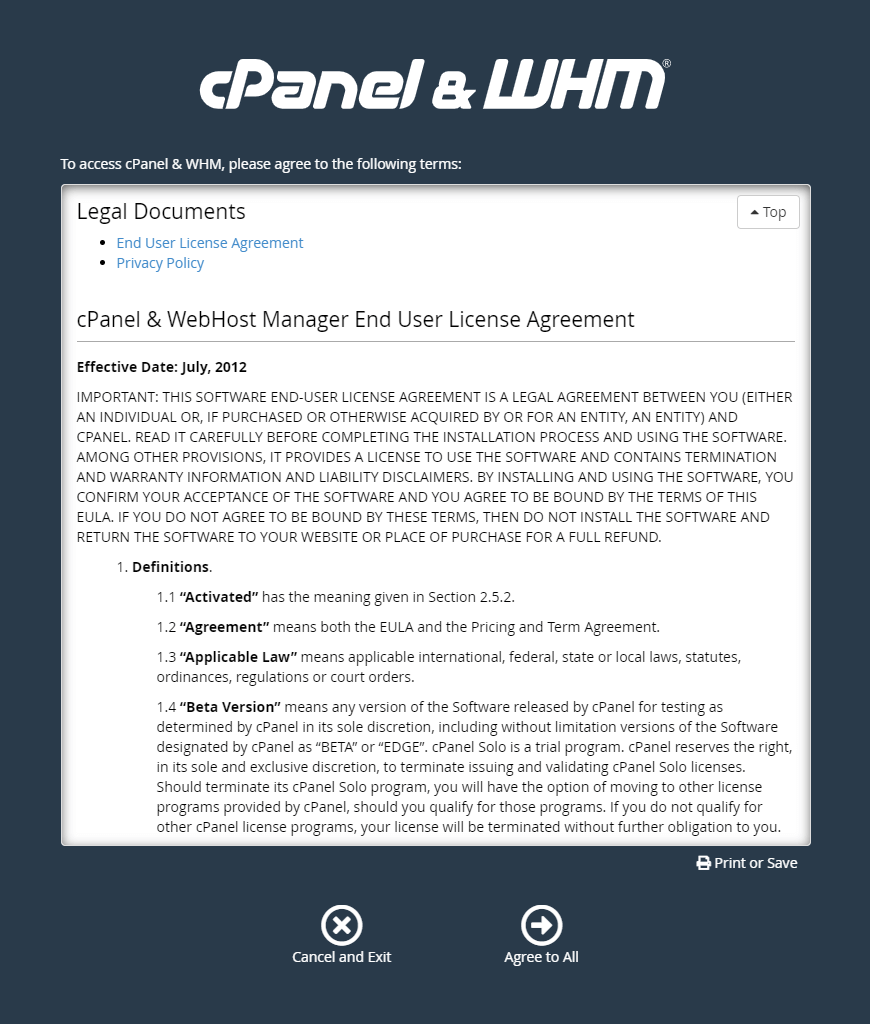

- HOW SETUP CENTOS CPANEL WHM AT HOME SERVER HOW TO
- HOW SETUP CENTOS CPANEL WHM AT HOME SERVER INSTALL
- HOW SETUP CENTOS CPANEL WHM AT HOME SERVER SOFTWARE
- HOW SETUP CENTOS CPANEL WHM AT HOME SERVER DOWNLOAD
- HOW SETUP CENTOS CPANEL WHM AT HOME SERVER FREE
On a cPanel/WHM server you can easily install PHP-REDIS with just a few clicks. Once the Redis is installed, we will need the PHP-REDIS extension.
HOW SETUP CENTOS CPANEL WHM AT HOME SERVER FREE
You are always free to allow more memory for the Redis cache, change the maxmemory value to the desired value. To start Redis automatically upon server reboot, run the following command:Īnd add the following 2 lines at the end of the file: Rpm -Uvh remi-release-6*.rpm epel-release-6*.rpm Run the following commands and this completes the Redis installation:
HOW SETUP CENTOS CPANEL WHM AT HOME SERVER DOWNLOAD
Access server with SSH and download the following two rpms: The steps below explain the installation and configuration process on CentOS 6 with cPanel 11.48 but should work on other cPanel versions as well. To complete the installation steps below you will need root access to your server or a user with sudo privileges. Installing Redis cache, PHP-Redis and WordPress If a page is edited or a new content is posted on your website, the Redis cache for that content will be invalidated to avoid dirty cache and will be updated after the next page load. Still, this solution is most beneficial for WordPress websites with a large number of simultaneous requests as reducing the number of simultaneous queries to your website database greatly improves the performance, eliminates MySQL bottleneck and provides better utilization of the server resources so you can handle more traffic, faster and cheaper eliminating the need for a more powerful hardware.Īdditionally, caching with Redis completely terminate the need to manually flush the cache when new content is published. This can be very beneficial even if you have just a few visitors as on your website as retrieving the data directly from the memory via the Redis can reduce the page load time in half. Upon future requests of the same page, the information will be retrieved from the Redis cache eliminating the need to execute the MySQL query. By implementing a Redis caching, the results of the query will be stored into the memory block managed by Redis. How does the caching work?Įvery time a WordPress page is accessed a query is executed towards the WordPress database to fetch the content of the page. In fact, the similar result can also be achieved from Memcached, Redis is most easy to install with similar performance of cPanel/ WHM. Redis has built-in replication, LRU eviction, Lua scripting, transactions and different levels of on-disk persistence, and provides high opportunity via Redis Sentinel and automatic partitioning with Redis Cluster. It also supports data structures such as Sets, Hashes, Strings, Lists, Sorted sets with range queries, Hyperloglogs, Bitmaps and Geospatial indexes with radius queries.
HOW SETUP CENTOS CPANEL WHM AT HOME SERVER SOFTWARE
Redis is an open source (Berkeley Software Distribution ( BSD ) licensed), in-memory data structure store which is used as a database, cache and a message broker. However, Redis is fully compatible with cPanel/WHM installation and you can use the below guide to install Redis on cPanel/WHM VPS or a Dedicated Server purchased from TNP HOST. There are several articles available on internet related to use of Redis in pure Ubuntu or CentOs.
HOW SETUP CENTOS CPANEL WHM AT HOME SERVER HOW TO
This article explains how to improve WordPress performance by using Redis Cache.

One of the most popular caching systems is Redis. I have found several somewhat-related questions, but they are generally not what I'm looking for (example, how not to use cPanel).In this article, TNP HOST will demonstrate installation of Redis cache for WordPress and how to supercharge your website using Redis. Some secondary questions: Is it possible to do this in cPanel/WHM? If not, and I try to configure the second domain by hand, will it conflict with cPanel/WHM in any way?


 0 kommentar(er)
0 kommentar(er)
